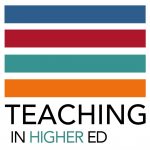Every learner needs to build new concepts into their own pre-existing knowledge. That’s the constructivist model for teaching and learning and ultimately, I believe, the rationale and justification for active learning. Like I said on Twitter a few weeks ago,
…“Active learning” means *every* student has opps to practice expert-like behaviors, not just select few who raise hands or voices.


 (No Ratings Yet)
(No Ratings Yet)

